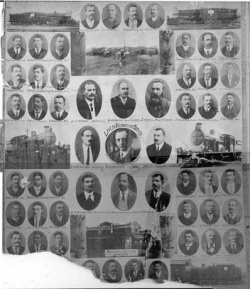Kharagpur Railway Workshops
Kharagpur Railway Workshops

Kharagpur developed as a railway town with commissioning of the Bengal-Nagpur Railway(BNR) ‘Calcutta Extension’ from Sini to Khargpur, June 1898; the ‘BNR Cuttack Extension’ from Cuttack via Balasore to Kharagpur, 1898-9; the ‘BNR Jharia Extension’ to the Cossye River, 1899 and on to Midnapore, 1901 [1]
The geographical location of Kharagpur and its rail links with the rest of the country favoured construction of a centralised workshop with facilities to carry out major repairs of all broad gauge stock. The work was sanctioned in 1900; construction of the workshop was completed in 1904. [2].
The British Army civil engineer Colonel C W Bowles was appointed by the Bengal-Nagpur Railway(BNR) Company to take charge of constructing its workshops, houses, schools, churches, hospitals, armoury, recreational facilities and a gaol. Bowles experimented with a Ewing System Monorail used during the Kharagpur Construction work.
Personnel Records
See separate page Bengal-Nagpur Railway Personnel
and the sub-section Loco Running Staff, Kharagpur 1910 for staff names
References
- ↑ “Administration Report on Railways 1918” page 2 (pdf9). Note: spelling is given as Khargpur in this report; Retrieved 19 Dec 2017
- ↑ Wikipedia “Kharagpur”; Retrieved 19 Dec 2017